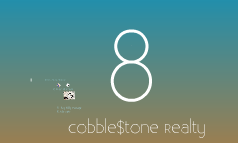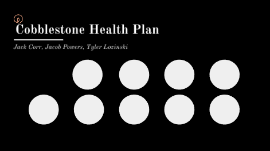Cobblestone
Transcript: Jack Corr, Jacob Powers, Tyler Lozinski Cobblestone Health Plan Acknowledgements Pros: Lower healthcare costs overall Doctors only have to deal with a government agency for billing procedures Same standard of services across hospitals Shorter wait times to see medical professionals Removes competition Cons: Healthy/Wealthy have to pay for other patients medical care People will be less careful with their health People will consume medical services more often Limited pay to doctors Gov’t may limit services if costs are too high Can limit new technologies from being developed due to cost Regulatory Environment Details The regulatory environment for Cobblestone will be centered around two of the biggest liabilities that health care systems face: false claims, and data breaches. Cobblestone will have a deeper screening process to ensure that the medical care a patient receives is adequate, and is consistent with their needs. While the False Claims Act makes it a crime for any person or organization to knowingly make a false record or file a false claim regarding any federal health care program, Cobblestone will go a step further and have official regulators in the hospitals that check each patient’s files. Cobblestone will have the best security systems on the market for all important documents and patient files. Cobblestone will ensure that false claims and data breaches will not affect our patients. We are looking to provide low cost health care to all of our patients. Regulatory Environment Rationale Two of the biggest liabilities within health care systems are false claims being pursued and data breaches that give access to confidential health files. There has been a general upward trend in the number of records exposed each year, with a massive increase in 2015. 2015 was the worst year in history for breached healthcare records with more than 113.27 million records exposed. Between 2009 and 2018 there have been 2,546 healthcare data breaches involving more than 500 records. Those breaches have resulted in the theft/exposure of 189,945,874 healthcare records. That equates to more than 59% of the population of the United States. Cobblestone will have the highest quality security system to ensure that data breaches are at a bare minimum. Hospitals will also have tech employees that will be able to identify the beginning steps of a data hack, and act accordingly. The confidentiality of our patients is extremely important and we will ensure that data breaches are a minimum. False claims within the healthcare system result in a lot of money being spent in settlements, as well as the potential harm to patients. Some risks of healthcare fraud include: false patient diagnoses, treatment and medical histories, theft of patients' finite health insurance benefits, medical identity theft, and physical risk to patients. Cobblestone will regulate each patient to ensure that false claims in our healthcare system are extremely low. Regulatory Environment Acknowledgments The pros and cons of the regulatory environment are quite simple: less risk for the hospitals and our healthcare system, but more money must be spent to ensure this security. The pros of have standards and practices in place to ensure less false claims and data breaches will save a lot of money and will keep patient’s confidentiality secure. A few cons are that tax dollars will have to go towards hiring these regulators, and acquiring the best security systems to stop data hacking. More security in false claims will save healthcare providers money, and will eliminate unnecessary treatment. This too will save money and will give doctors more time to focus on patients with true needs. Moral Hazard Details In our country we have decided that in order to fight against moral hazard one regulator will be stationed in each hospital and doctors office to oversee treatments of patients to avoid the common action of excessive or unnecessary treatment. In order for this process to be effiecent patients will submit applications prior to their visits and explain symptoms and can be diagnosed on as needed basis. These regulators will work in part with the medical facility and review each patients profile and determine the appropriate amount of care needed. This will help save customers money while also keeping doctors honest. The other possible moral hazard we discovered deals with patients over using their health care. In a world of universal health care there is more coverage for less cost which would incentize individuals to visit the hospital or doctor even if they didn’t need treatment. This leads to overcrowding of the medical facilities as well and makes it more difficult to care for those who desperately need it. The regulators mentioned above would also be staffed to determine whether the patient requires any treatment. Moral Hazard Rationale We believe this will help prevent things like wasteful operations or over treatment and keep the money in the pockets of

















